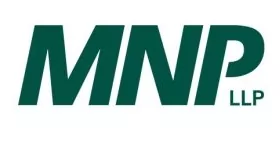Just because your business doesn't have an IT department doesn't mean you can't make effective use of technology. Whether you are starting a new business or looking to improve how your organization uses technology here are some tips to help you make the most of your IT investments.
Have a Plan
Regardless of the size of your company, make a plan. Spend some time thinking about how your business operates and where technology can be used support your business strategy, save you time or allow you to offer better service. A good technology plan will detail your anticipated long-term (3 to 5 years) hardware, software and infrastructure needs and allow you to establish priorities for acquisition. The plan should also include a schedule for regular software and hardware upgrades while identifying ongoing staff training needs. Once you've created an initial plan, review it regularly and update it to take advantage of new technologies and reflect changes in your own priorities. With a solid technology plan you are better prepared to make smart technology decisions that help you invest in your company's long term growth.
Embrace the Cloud
If you don't have an IT team, why maintain technology infrastructure? Cloud technology has become both mainstream and affordable and virtually any type of business software or service is now available online. Cloud vendors have designed specific service offerings for small-to-medium sized businesses that range from basic productivity tools (email, file storage, word processing, spreadsheet, presentation software and collaboration tools), to complex line of business applications (accounting, human resource, inventory management, maintenance management and customer relationship management software). Cloud vendors have invested significantly in infrastructure and can offer solutions with better availability, performance, scalability, and security than is possible for most small-to-medium sized businesses.
If you are considering migrating your company to cloud services take the time to understand your business needs before evaluating potential solutions. Look for vendors or solutions that have a well-established client base and a proven track record of cloud service delivery. Take the time to get a detailed demo or trial version of the software and ask the vendor for client references. Resist the temptation to buy the first product you see – there are lots of options available and time invested in selecting the best solution for your businesses is time well spent.
Find a Good IT Service Provider
Even if you outsource all of your server and software needs to the cloud, there will be times when you need an actual IT expert to help you with onsite technology activities and issues, including workstation upgrades or replacements, printer configuration, connectivity issues or general system troubleshooting.
When looking for an IT support service provider, have a full understanding of the services you need, your anticipated volume of calls and your expectations for response times before you start talking to potential vendors. When speaking with potential service providers, look for vendors with adequate staff to provide timely support and can offer value added services like a customer support website with the ability to track service requests. Your IT support provider should also have experience working with similar businesses. You might want to ask other business owners for recommendations and be sure to check references from active clients. Always insist on a contract that clearly defines services, response times, fees and other vendor obligations.
Invest in Technology that Will Make You Money
There is software available to support almost every business function imaginable – how do you know what software your business needs? A good rule is to invest in technology that supports your core business activities and will help make you more efficient and profitable. This will vary depending on your business. Do you have sales people out generating orders? Invest in customer relationship/order management (CRM) software. Are your customers looking for detailed information about your goods and services? Put money into your website to make it easy for your customers to find what they need. Doing business online? Focus on ensuring that your ecommerce platform is secure and stable. Don't forget about administrative applications for accounting and human resources; automating purchasing and staff management activities will free up staff time for other work. The key is to focus on those areas of your business where your technology investment will have the biggest impact.
You Get What You Pay For
Many smaller businesses try to save money on technology by using free software, buying non-commercial hardware and getting IT support services from friends who "know a little bit about technology". This almost always costs you more in the long run as you deal with technology issues and failures. Data loss, reduced productivity and poor customer service are only some of the potential impacts your business may experience should your technology fail. Resist the temptation to go with the lowest cost solution and invest in finding technology options that will provide your business with long term value.
By viewing technology as a key asset of your business that contributes to your overall success, spending time planning for your current and future IT needs and acquiring software, infrastructure and services that will meet your needs, your business will be well positioned to maximize your investment in technology.
The content of this article is intended to provide a general guide to the subject matter. Specialist advice should be sought about your specific circumstances.

